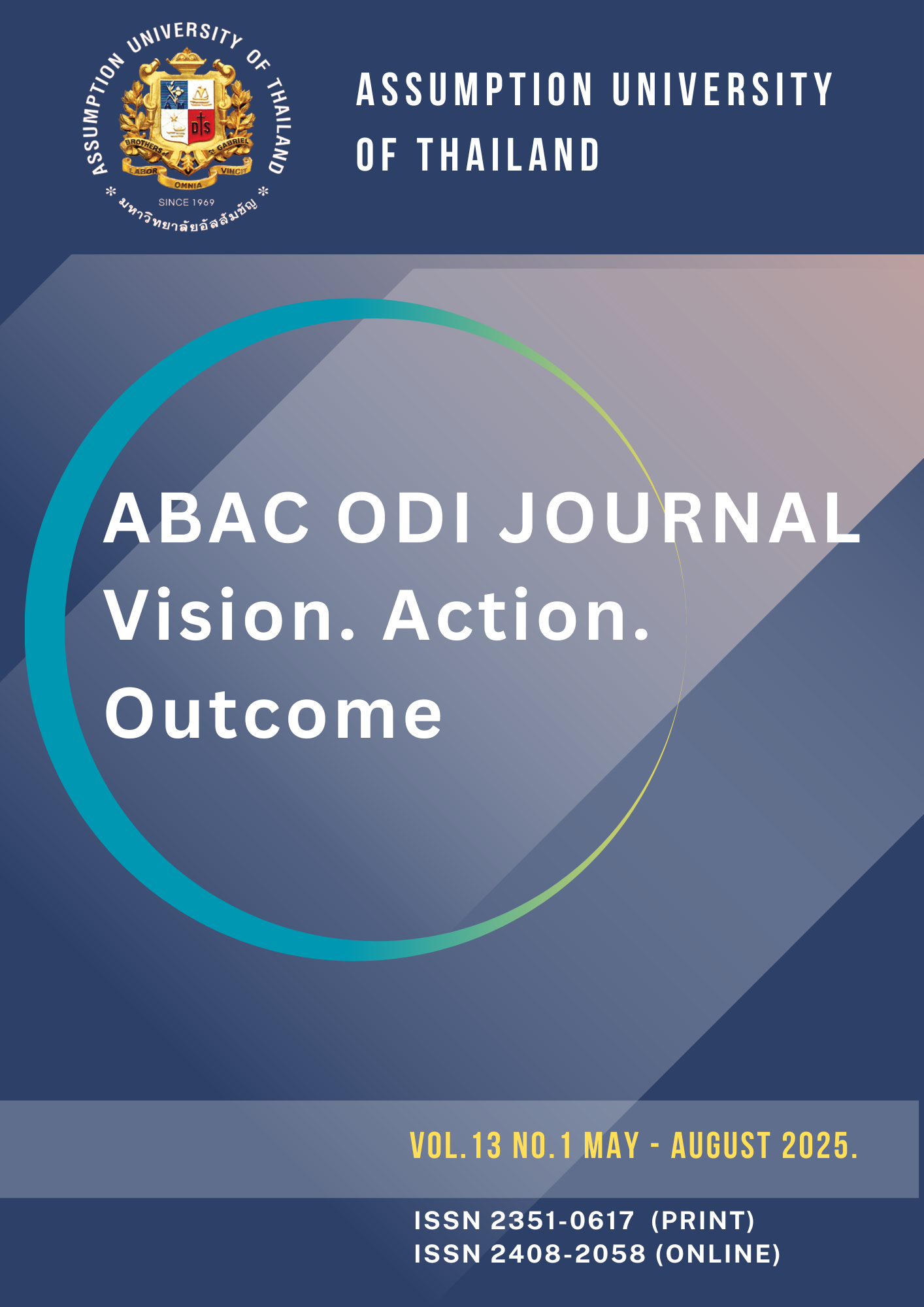Exploring Behavior Intention and Attitude Towards Adoption of Social Media of Nursing Student at School of Nursing Science at a Private University, Thailand
DOI:
https://doi.org/10.14456/abacodijournal.2025.36Keywords:
Behavior Intention, Social Media, TAM, Attitude, Nursing EducationAbstract
The study aimed to determine the behavioral intention to adopt the social media as supplementary tool, investigate the attitude towards adoption of social media as supplementary tool, and explore how the nursing students adopt the social media as supplementary tool for Nursing Foundation course of nursing student at a private university. The researchers used mixed research design, quantitative research and qualitative research method. The survey questionnaire with 5 Likert Scale was employed for quantitative research to measure the behavior intention to adopt the social media as supplementary tool for Nursing Foundation course and attitude towards adoption of social media and semi structure questionnaire for qualitative research. The participants of the study who completed and returned the survey were 24 nursing students. The semi - structure questionnaire was employed to explore how the nursing student adopted the social media as supplementary tool for Nursing Foundation course at a private university, The researchers utilized the descriptive statistic to analyze the data for quantitative research and content analysis, inductive and deductive method for the qualitative research. The research findings revealed that the student perception towards all 5 variables were at high level. However; the student perception toward perceive ease of use (PEU) was the highest level (=4.67,S.D.=0.71) among all five variables, Perceive usefulness (PU) was at high level (=4.35.,S.D.= 0.58) , the student attitude toward using(ATU) social media was at high level (=4.16,S.D.=0.51) , the student’s satisfaction was positive attitude at high level ( .,S.D.=0.95) and the student behavioral intention (BI) toward adoption of social media was at high level consecutively at ( 3.92.,S.D.=0.73).
References
Al-Azawei, A. (2019). What drives successful social media in education and e-learning? A comparative study on Facebook and Moodle. Journal of Information Technology Education: Research, 18, 253-274. https://doi.org/10.28945/4360
Aryadoust, V., & Shahsavar, Z. (2016). Validity of Persian blog attitude questionnaire: An evidence-base approach. Journal of Modern Applied Statistical Methods, 15(1), 22. https://doi.org/10.22237/jmasm/1462076460
Davis, F. (1989). Perceived usefulness, Perceived ease of use and user acceptance of information technology. MIS Quarterly 13(3), 319-340.
Giroux, C. M., & Moreau, K. A. (2022). Nursing students’ use of social media in their learning: A case study of a Canadian School of Nursing. BMC Nurs, 21, 195.
https://doi.org/10.1186/s12912-022-00977-0
Mei, B., Brown, G. T., & Ten, T. (2018). Toward an understanding of preservice English as a foreign language; teachers’ acceptance of computer assisted language learning 2.0 in the People Republic of China. Journal of Educational Computing Research, 56(1), 74-104.
Noosong, J., & Achwarin, N. (2021). Managing teacher acceptance of new technology: The case of robotics kit. ABAC Journal, 41(4), 272-292.
Punnoose, A. C. (2012). Determinants of intention to use elearning based on the technology acceptance model. Journal of Information Technology: Research, 11, 301-337.
Tarhini, A., Hone, K., & Liu, X. (2014). Measuring the moderating effect of gender and age on e-Learning acceptance in England: A structural equation modeling approach for an extended technology acceptance model. Journal of Education Computing Research, 51(2), 163-184.
Teo, T. (2010). A path analysis of pre-service teachers' attitudes to computer use: Applying and extending the technology acceptance model in an educational context. Interactive Learning Environments, 18(1), 65-79.
Teo, T., & Lee, C. (2010). Explaining the intention to use technology among pre-service teachers. Campus-Wide Information Systems, 27(2), 60-67.
Teo, T., Su Luan, W., & Sing, C. C. (2008). A cross examination of the intention to use technology between Singaporean and Malaysian pre-service teachers: An application of technology acceptance model (TAM). Educational Technology & Society, 11(4), 265-280.
Toyn, P. T., & Achwarin, N. (2019). The development of Vodcast enhancing nursing students knowledge and nursing of faculty of nursing at a private college. Research and Development Health System Journal, 12(3), 520-525.
Venkatesh, V., Morris, M. G., Davis, G. B., & Davis, F. D. (2003). User acceptance of information technology: Toward a unified view. MIS Quarterly, 27(3), 425-478.




